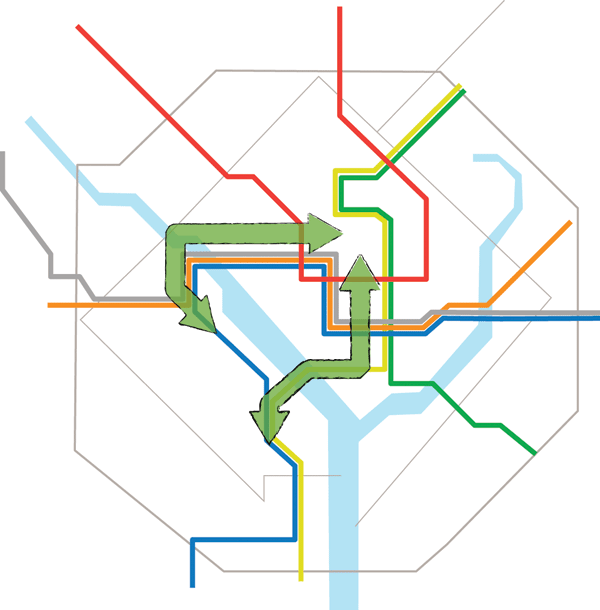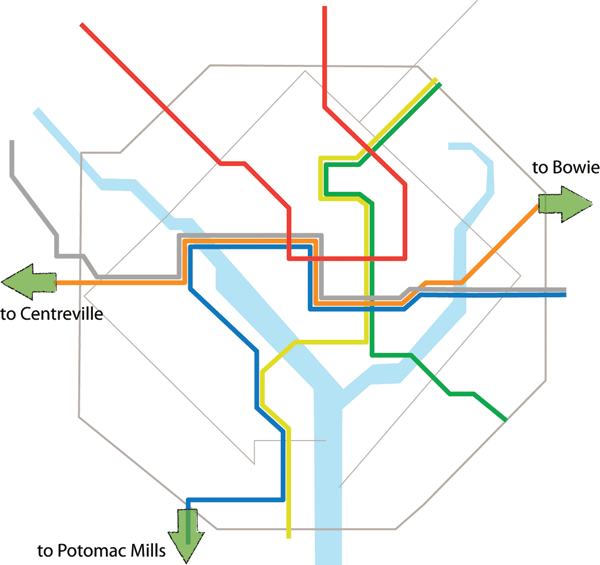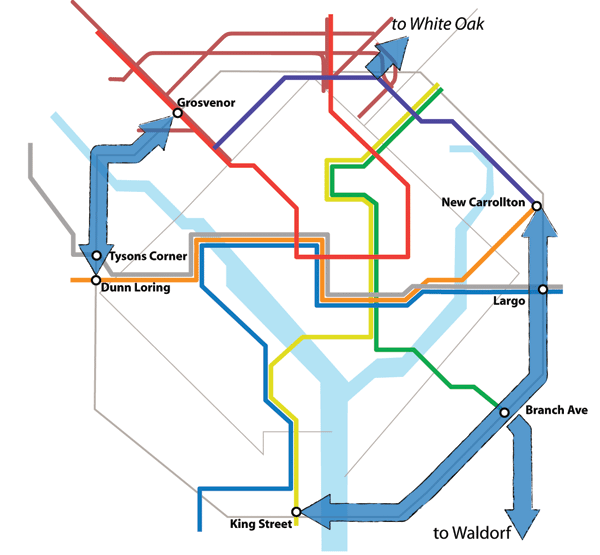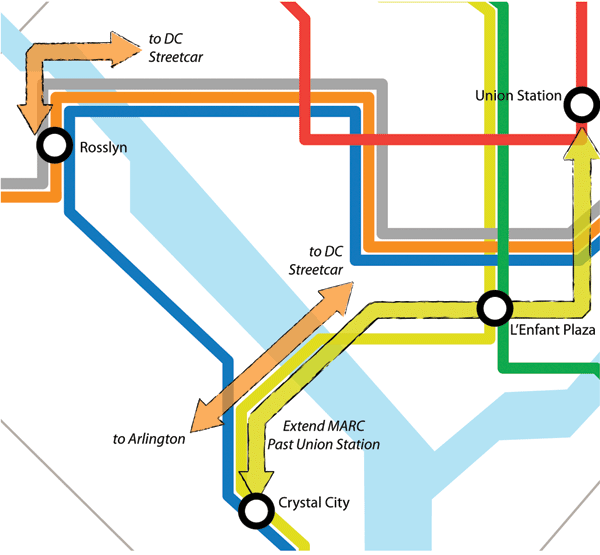Metro 2040 – Building the System that the Region will Need
The year 2040 may seem distant  and removed, but in the context of transit planning, it is right around the corner. Metro’s Office of Planning is in the process of developing the 2040 Regional Transit System Plan (RTSP), which will outline a comprehensive regional transit network to prepare the region’s transit system for continued growth.
and removed, but in the context of transit planning, it is right around the corner. Metro’s Office of Planning is in the process of developing the 2040 Regional Transit System Plan (RTSP), which will outline a comprehensive regional transit network to prepare the region’s transit system for continued growth.
The RTSP, along with other elements that may be identified in the future, will need to be evaluated as necessary to meet the demands in the future. The plan includes a combination of core system improvements, which are included as part of Metro 2025 above, as well as system connectivity and expansion projects. Most importantly, it combines all modes in the region’s transit system, whether or not Metro will build or operate them. The strategies in the plan are designed to both serve existing areas better and provide service to new areas, helping to realize Region Forward’s vision of regional activity centers with transit options that improve regional mobility, enhance commerce and competitiveness, and have environmental and health benefits for generations to come.
If the Metro 2025 investments are implemented, they will help the region to solidify its first-class transit system and have mobility and economic development benefits for the next decade. However, Metro leadership is keenly aware that even if Metro 2025 is implemented, it will be inadequate to keep up with the total amount of projected growth that is forecasted to occur over the next 30 years. Metro leadership wants to make sure the region’s transit network – which contributes to the assumptions feeding these growth projections – helps to ensure the region’s growth and prosperity through and beyond this forecast period.
The Metro 2040 elements that will build on Metro 2025’s foundation are still in the conceptual planning phases and could include the following:
New Metrorail lines in the core
In the longer run, with volumes on lines converging at Rosslyn and L’Enfant Plaza reaching full capacity, new east-west and north-south Metrorail tunnels through parts of Arlington and District of Columbia could be built to accommodate trips to and through the system’s core.
Extending the reach of the system
To address the growth in the outer suburbs and take advantage of new Metrorail lines in the core, several extensions could be considered. These could be developed as Metrorail, bus-rapid transit (BRT), or light- rail transit (LRT), depending on further analysis. As they would bring additional riders into the system core, the Metro 2025 initiatives discussed would need to be in place and, in some cases, they would need to go hand-in-hand with new Metrorail lines in the core.
Extend high quality surface transit
Some transit corridors are forecasted to have passenger volumes that are served more cost-effectively by LRT or BRT, rather than Metrorail. Examples of corridors include extensions of the planned Purple Line from New Carrollton south and west to Virginia, and a new BRT connection from North Bethesda to Tysons Corner and Dunn Loring.
Cross-Potomac connections
The planned streetcar networks include multiple routes currently under development in the District of Columbia and Virginia. By connecting these systems across the Potomac, additional capacity would complement that of the Metrorail system while serving travel corridors that align better with the region’s travel patterns. Similarly, extending MARC commuter rail from Union Station to L’Enfant Plaza and across the Potomac, to Crystal City and beyond, would reduce pressures on Union Station and enable through-running of commuter rail between Virginia, Washington, and Maryland.
Commuter rail / commuter bus service
The capacity of the region’s transit network would be expanded by improving the frequency of commuter rail and bus services, such as for MARC commuter rail services, additional off-peak service on the MARC Brunswick and Camden Lines with added bi-directional service on the Camden Line. Similarly, increased commuter bus frequency would provide more capacity and adding bi-directional service during the peak period would support the reverse commute.
For more information:
Download both the full Momentum plan and the Executive Summary.
Regional support is important to making Momentum a reality! A number of regional stakeholders have already endorsed Momentum. Please sign on and add your name to endorse Momentum and send the message that public transit is vital to the National Capital Region.






Amen to MARC and VRE improvements. If Metro could stop being a commuter rail service because MARC and VRE served outlying communities like Bowie and Centerville, then it would have the ability to focus more clearly on being an inner suburb subway. Extending Metro to those places is a bad idea, absent express tracks and/or third tracks. I don’t see Metro 2025 really helping much if the system is than once again overtaxed by extending the Metro ‘subway’ into further and further communities. That is what VRE and MARC should be for.
Ditto to JDC’s comment about Metro not being a commuter rail service. We should be strengthening VRE and MARC rather than adding another half-dozen stops to the end of the Orange Line.
But I’d also hope that a potential Tysons – Maryland service would run through to Bethesda (ideally continuing the Purple Line) to create a one-seat ride from Tysons to the major downcounty commercial centers.
Disappointed that there’s *STILL* no mention of rail transit along the Rt 1/Richmond Hwy corridor in SE Fairfax. Would do a lot more than a Blue Line extension to Potomac Mills, nevermind that such a Blue Line extension largely follows what is an already existing VRE corridor.
Froggie: It’s impossible to extend the yellow line further south of Huntington. There is no open right-of-way to put rail, and many miles of continuous residential development are in the way beginning at Huntington and continuing south.